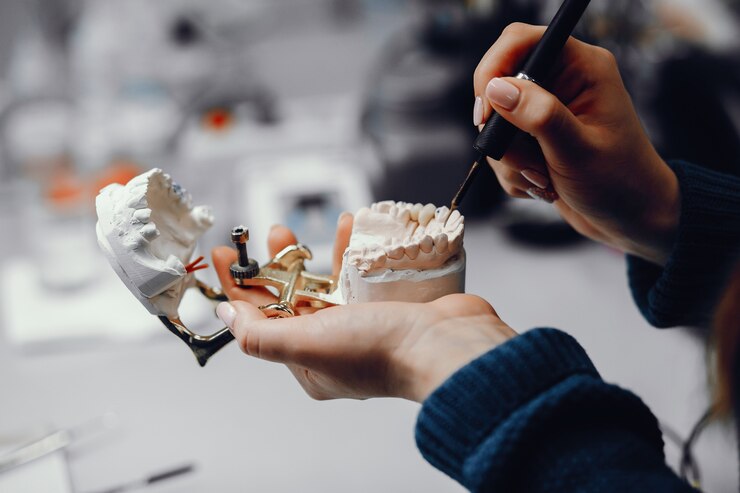The journey to restoring one’s smile through a dental implant procedure is a significant decision that can greatly enhance an individual's quality of life. Over the years, dental implants have gained immense popularity, providing a reliable solution for those who have lost teeth due to injury, decay, or other dental issues.
Understanding what to expect during the procedure can alleviate anxiety and help patients prepare for the journey ahead.
Initial Consultation and Treatment Planning
Before the dental implant procedure can commence, an initial consultation is essential. During this appointment, the dental professional will conduct a thorough examination of the patient's oral health. This may involve taking X-rays or 3D scans to assess the jawbone's condition and determine whether it can adequately support the implant.
The dentist will discuss the patient's medical history, including any existing health conditions or medications that might affect the procedure. This open dialogue is crucial, as it allows the dentist to tailor the treatment plan to the patient’s specific needs. If the jawbone is found to be insufficient for the implant, the dentist may recommend procedures such as bone grafting, which can strengthen the area before the implant is placed.
Following this assessment, the dentist will present a comprehensive treatment plan outlining the steps involved in the dental implant process. This plan can vary significantly depending on the individual’s oral health, the number of implants needed, and any additional treatments required, providing a clear roadmap for the patient.
The Surgical Procedure
On the day of the dental implant surgery, the patient will arrive at the dental practice, often feeling a mixture of anticipation and anxiety. The dentist will ensure that the patient is comfortable, often administering local anaesthesia to numb the area where the implant will be placed. Sedation options may also be available for those who experience heightened anxiety during dental procedures.
Once the patient is prepared, the dentist will make a small incision in the gum tissue to expose the underlying bone. A hole is then drilled into the bone where the implant will be inserted. The dental implant, typically made of titanium, is placed securely within this hole. This titanium post acts as a replacement root, providing a sturdy foundation for the new tooth.
After the implant is in place, the dentist will close the incision with sutures. This initial surgery is relatively straightforward and usually takes just a couple of hours, depending on the complexity of the case. While some discomfort may be expected post-surgery, it can often be managed with over-the-counter pain relief and proper care.
Healing and Osseointegration
Following the surgical procedure, the next phase involves healing, a process known as osseointegration. This crucial step entails the integration of the titanium implant with the jawbone, forming a solid bond that allows the implant to function much like a natural tooth root.
The healing process typically takes several weeks to months, during which time the patient may be advised to follow specific aftercare instructions. These instructions could include avoiding certain foods, maintaining excellent oral hygiene, and attending follow-up appointments to monitor healing.
It’s important to note that during this period, some patients may experience swelling or discomfort, which is entirely normal. However, any severe pain or signs of infection should prompt a visit to the dentist. Regular check-ups are vital to ensure that the healing process is progressing as expected. If issues arise, such as the need for denture repair, these can be addressed promptly, ensuring the best possible outcome.
Placement of the Abutment and Final Restoration
Once the osseointegration process is complete, the next step in the dental implant journey is the placement of the abutment. This component acts as a connector between the dental implant and the final restoration, which is the visible part of the tooth, often referred to as the crown.
The procedure for placing the abutment is relatively straightforward. The dentist will make a small incision in the gum tissue to expose the implant and attach the abutment. After securing it in place, the gum tissue will be stitched back up, allowing for healing around the abutment.
Following this, impressions of the mouth will be taken to create a custom crown that matches the colour and shape of the surrounding natural teeth. This process may take a few weeks, as the crown is crafted to ensure a perfect fit. Once the crown is ready, the patient will return to the dental practice for the final placement. The dentist will carefully attach the crown to the abutment, ensuring it is secure and comfortable.
Post-Procedure Care and Maintenance
After the dental implant procedure is complete, patients are often filled with a sense of relief and excitement as they can soon enjoy the benefits of their new smile. However, proper care and maintenance are crucial for the longevity of the implant.
Maintaining excellent oral hygiene is essential, as it helps prevent complications such as infection or peri-implantitis, a condition that can affect the tissues surrounding the implant. Regular brushing and flossing, along with routine dental check-ups, will ensure that the implant remains healthy and functional.
Additionally, patients should be mindful of their diet, especially during the initial healing phase. Soft foods are recommended to avoid putting excessive pressure on the implant site. As healing progresses, individuals can gradually reintroduce harder foods into their diet.
Many patients find that their new dental implants not only restore their ability to eat comfortably but also enhance their confidence when smiling and speaking. The positive impact on one’s quality of life cannot be overstated, making the preparation and care that goes into the procedure well worth the effort.
Understanding the dental implant process can empower individuals to make informed decisions about their oral health. By knowing what to expect, patients can approach their treatment with confidence, anticipating each step along the way. The journey to a restored smile is one filled with hope and the promise of a brighter future.





Comments